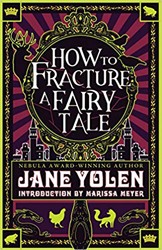Howard Schwartz unites the largest body of tales told by and about Rabbi Nachman, the great-grandson of the Ba’al Shem Tov and the founder of Hasidism, to build a case for his place as literary and psychological trailblazer. He opens by retelling thirteen of the rabbi’s major oral tales, including “The Lost Princess” and “The Pirate Princess.” These are followed by seventy-two additional stories, parables, dreams and visions, and tales about Hasidism, many of which are less well-known. Folktales the rabbi shared with his followers and the stories they in turn told about him complete this collection.
Schwartz’s analysis is characterized by respect, scholarship, and a sense of joy. He shares his insights into the meanings of recurring motifs within Rabbi Nachman’s stories. Through the figures of folkloric princesses, for example, Rabbi Nachman created allegories about the exile of the Shekhinah—God’s bride or essence—as a way to reach his followers. He wanted them to participate in repairing the world by helping to end her absence after the temple in Jerusalem was destroyed. Schwartz explains how Rabbi Nachman embraced multiple interpretations of his stories. The minister who seeks the lost princess may variously represent a hidden saint, the nation of Israel, or the Messiah. Rabbi Nachman believed that exploring the mysteries and discovering new meanings within the Torah could lead to the highest levels of spirituality – something he felt his stories could help others achieve.
Schwartz meticulously sources each tale and places it in the arc of Rabbi Nachman’s life. He parallels the telling of “The Sabbath Guests,” where the Ba’al Shem Tov believes he is going to have to sacrifice his own life for lost souls, with Rabbi Nachman’s own arrival in Uman. He wanted to be buried there, where thousands of Jews had been murdered, because he believed they would need him to lead their souls to the afterlife. He also believed in his own special purpose as a holy teacher, a hidden saint, or the Tzaddik who would pave the way for the heavenly Messiah.
Steeped in Rabbi Nachman’s literary style, religious faith, and mystical beliefs, Schwartz completed nine of the rabbi’s unfinished stories, including “A Garment for the Moon” and “The Souls of Trees.” Rabbi Shapiro’s foreword shows great appreciation for Schwartz’s accomplishment — stepping into Rabbi Nachman’s world and recreating his stories for contemporary readers.
Sharon Elswit, author of The Jewish Story Finder and a school librarian for forty years in NYC, now resides in San Francisco, where she shares tales aloud in a local JCC preschool and volunteers with 826 Valencia to help students write their own stories and poems.





